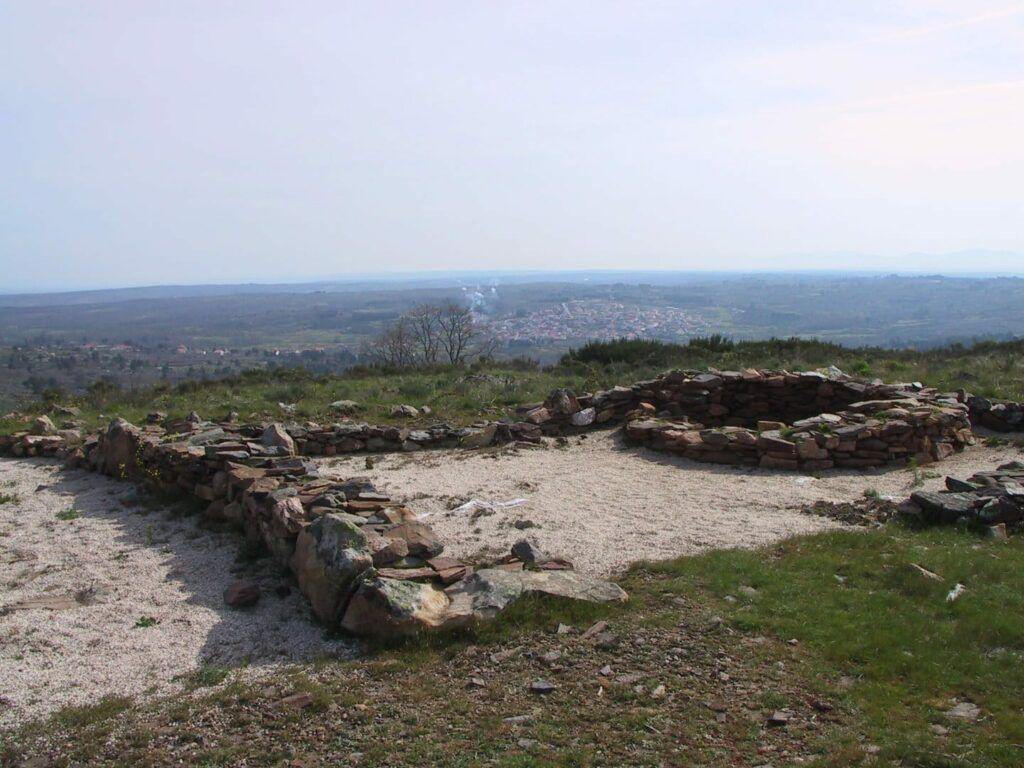Sabugal Velho Ruins
The Ruins of Sabugal Velho are located in the Aldeia Velha parish. The traces cover a small size hill, that stands out of the plateau plain because of its 1019m of altitude, confering the hill a vast visual domain over the Guarda/Sabugal platform. Besides the strategic potential, the human occupation and its settlement is due to the mining riches, where are confirmed to exist deposits of iron and tin in the proximities.
Archaeological diggings were made on site between 1998 and 2002 that confirmed the presence of buildings and materials related to two chronological periods: the 1st phase inhabited during the 1st century b.C. and the 2nd of a presence dating to the 12-13th centuries. The conclusions indicate that Sabugal Velho is one of the fundamental sites for the study and comprehension of the Beira proto-history and of the leonese presence in the lands of Riba-Côa.
On site are visible many ruined buildings, spreaded throughout the hill and surrounded by a ring of collapsed stones, that limit the steep hillsides, and a second construction, exterior and made of compacted dirt, solely on the west slope. The escavations allowed to assert that these ruins report to the last human presence on the site, with a fortified medieval village, which constructions are well preserved and delimited inside the the inner wall space. The agglomerate was disposed in grid. The houses are distributed along the central street, to which intersect smaller arteries. The buildings, built on schist, show rectangular plants and are lined along these axis of the settlement.
Archaeological works allowed to detect an older level of occupation, with interesting traces of communities dating the Final Bronze and Iron Ages, and made possible the knowledge of their material culture: manual pottery, painted modelled pottery, crucibles, chisels, buckles, stone axes, glass beads, schist pendant, shuttle millstones and stone weights.
On the other hand, was also obtained a view of the daily life of the Riba-Côa populations, during the Leonese presence of the 12 nad 13th centuries, through the collection of round millstones, slag, horse shoes, rings and spikes, nails, a key, coins, buckets and other common domenstic pottery, lids, a bead, belt bickles, a bird trap. It is from this spoil that scholars take the best parallels to date the traces of human occupation on the two periods.
The settlement was rehabilitated for visitation and the materials found in the diggings and exhibited in the Sabugal Municipal Musuem, and make them one of the greatest call cards of the museum.




